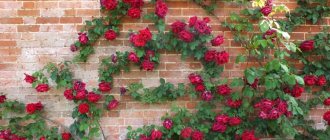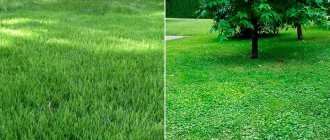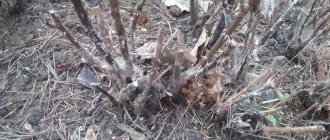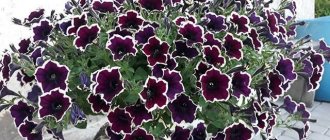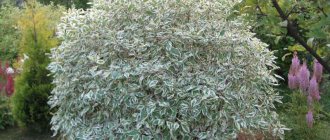Juvenile is considered one of the most hardy and unpretentious ornamental crops. However, before this succulent takes its place of honor in your flowerbed, you will have to rack your brains a little in order to protect young specimens of this plant from weeds.
Juvenile received one of its many popular names - stone rose - for the similarity of the rosettes of this plant with the blossoming buds of the queen of flowers and for its extraordinary endurance. However, even such a picky plant as tenacious (another popular name for young) needs protection from the ubiquitous weeds.
Why does the young need to be protected from weeds?
Despite its reputation as one of the most unpretentious ornamental crops, juveniles are not very common in wildlife. Mainly because its root system is not very branched and is too close to the surface of the earth, which is why the succulent often becomes a victim of more aggressive plants, whose roots actually “survive” the succulent. The most popular method of weed control - weeding - in the case of young plants will not bring the desired effect, since in the process of getting rid of weeds there is a risk of damaging the roots of the succulent.
The exception is those cases when young juvenile plants find themselves in the “right” place, namely, in sandy and sunny areas where they have no competitors. Once in fertile soil (in the literal sense of this expression), the young plant quickly grows, filling all the free space and forming a dense plant carpet, through which it is extremely difficult for weeds to break through.
It follows from this that the best way to combat weeds that attack the stone rose is to choose the right “planting site.” Where is the best place to do this?
Description of the plant
Juvenile (lat. Sempervivum) is a genus of plants belonging to the Tolstyankov family. It includes from 40 to 100 species (depending on the systematic approach), which easily interbreed.
Origin
The natural distribution area of juveniles covers territories from Morocco to Iran, including: the Iberian Peninsula, the Alps, the Sudetes, the Carpathians, the Balkans, and the Caucasus. This allows the plant to adapt to both low and high temperatures, as well as withstand periodic water shortages.
Botanical characteristics of the genus
- Herbaceous, perennial plants, sometimes subshrubs.
- The leaves are oblong, thick, fleshy, succulent, with ciliated edges. They are arranged alternately, overlapping each other in the form of tiles.
- Peduncles reach 10-60 cm in height, pubescent, unbranched.
- Flowers - collected in apical paniculate inflorescences, sessile or on short pedicels (up to 5 mm), have 6-12 petals fused at the base. There are twice as many stamens (10-40 pieces) as petals.
- The fruits are oblong leaflets and contain many seeds.
The plant is also called rock rose and rabbit cabbage. The Latin name of the genus Sempervivum literally translates as “always alive.” The English name juvenile is less poetic, but more figurative - the plants are called “eggs and chicks” (hens and chicks) because of their unusual shape, and often “house onions” (houseleek). These plants have been used for centuries to this day for medicinal purposes ranging from diarrhea to burns, wounds and insect bites.
The genus belongs to succulents, that is, plants that, as a result of adaptation to external conditions, have formed aquatic tissue that serves as a water reservoir for periods of drought. However, juvenilia, unlike cacti, is defined as a leaf succulent, which means that it stores water mainly in the leaves (cacti - in the stems).
They are non-desert species, growing in a wide area from Morocco and Iran to the Carpathians, Sudetes and the Alps. The vast majority prefer rocky slopes, gravel areas, crevices, sandy slopes covered with grass, where the sun shines in abundance, even if water is periodically scarce. In Russia, young Russian (Sempervivum ruthenicum) grows in nature; in the Caucasus, you can find young Caucasian (Sempervivum caucasicum) in natural landscapes.
Juveniles are quite easy to recognize by their characteristic rosettes of thick, succulent leaves that grow in width, forming dense clusters in the form of rosettes. The young plant has the shape of a small ball, but as it grows its leaves spread out to the sides. A mature plant reaches, depending on the species and variety, from several to several tens of centimeters in diameter.
With this form, plants amaze with their richness of colors. Their leaves are green, often purple, red, brown and gray due to the hairs that cover them. The shades change with the seasons and become more intense towards winter. During prolonged drought, the leaves cluster close together to prevent water loss. The above-ground parts do not die off in the fall, thanks to which the plants decorate the garden in winter.
Rosettes of leaves pressed to the ground reach 3-5 cm in height. At the beginning of summer, flower shoots appear above the rosettes, reaching a height of 20 cm, on which flowers appear in intense shades of red, white, and yellow in late July-early August. After flowering they turn into leaflets with seeds. When the flowers dry out, the rosette that produced them dies, and small daughter rosettes grow around it. Young plants quickly take root in the ground, due to which the colony expands its territory from year to year.
Juvenile has very underdeveloped roots, which turns out to be an advantage, allowing it to exist on hard, rocky soil.
Development cycles
Young people have a specific development cycle:
- The most intense growth occurs in spring, when young rosettes grow radially from each rosette.
- In summer, during periods of extreme heat, the plants rest - growth stops, the rosettes often shrink, the rudiments of new leaves form in their central part, and the lower part dries out.
- In summer, flowers grow from the oldest plants. They are shaped like little stars and come in shades of pink and white. As the flower shoot grows and then the seeds ripen, the rosette that released them gradually freezes.
- The second phase of growth of young rosettes occurs at the end of summer, when the soil cools a little and it rains.
- In the fall, the young ones prepare for wintering - the leaves again group into balls, the roots completely stop growing. Substances are formed in the leaves that allow them to survive frosts. Juveniles rarely freeze, especially if they are covered with a layer of snow.
In the flowerbeds between the stones
In the fight against weeds that take away nutrients from plants with a shallow root system, the most important thing is not to leave them a single inch of free soil.
Juveniles look very impressive in flower beds. However, before planting it in the ground, you should carefully consider the appearance of the flower garden and select the appropriate companions. Stone rose categorically does not accept shading, so it should be planted only in open places where there is light most of the time. Otherwise, due to a lack of sun, the succulent will begin to stretch, lose its shape and lose its bright color, after which it will die.
In the wild, the juvenile grows between rocks, in areas with poor soil, so it is better to plant it in not too fertile sandy soil, surrounded by stones - this way you will not give the weeds a chance to get to the root system of the juvenile. Try to leave as little free space as possible in the flower garden. Before planting, carefully dig up the soil and get rid of all weeds, and then mulch the ground around the young plant with gravel or pebbles.
If the stem is stretched or the leaves are wrinkled, we eliminate errors in care
| Problem | Symptoms | Solution |
| Lack of light | Stretching of shoots, loss of decorative effect | Place it on the lightest windowsill, provide illumination with fluorescent lamps or phytolamps. |
| Lack of moisture | Leaves are limp, wrinkled | Increase watering. |
| Aging | Yellowing of lower leaves | This is a natural process in the life of a flower - remove them as they dry. |
| Excess moisture | Leaves are swollen, watery, yellow | Urgently inspect the roots and soil, replant the flower in suitable air-intensive soil, and adjust watering. |
In the rock garden
A rockery is a decorative composition in which the main role is given to stones, and plants serve only as bright accents designed to make the picture more lively and natural. If you choose a sunny place and manage to properly organize the drainage, then you will not find a better place to plant juveniles. A plant surrounded by stones will exist in almost the same conditions in which it lives in its natural environment, and will not suffer from weeds.
- How to make a beautiful rock garden with your own hands
Have you decided to create a spectacular rock garden on your site? We'll tell you how to set up a “stone flowerbed” and what plants to choose for it.
Reviews from flower growers
My flowers are all on the windowsill, which is located on the sunny side and not all flowers survive there.
Today all that remains are the Crassula, a couple of geraniums, mother-in-law's tongue and cacti. Caring for it (Echeveria - editor's note) is minimal, water it and occasionally loosen the soil. It is growing at a good speed and I think in a month or two it will be necessary to transplant it into a larger pot. Today I already have three plants, two are currently blooming, one is a baby. I bought more while we were in the store, and I don’t regret it at all. Other flowers die, but my echeverias grow and bloom. Idealnaya
https://irecommend.ru/content/krasivaya-i-ne-prikhotlivaya-0
I bought it in January, I have it a little different than on the screensaver: plum color, with a bluish waxy coating, and the shape of the leaves is different.
In summer it is very bright, almost amethyst, but in winter it turns pale. She lived on my eastern window, but there was little light, and as a result my “rose” grew to be 12 cm tall. The spectacle was not very attractive, it began to get more light, the top became denser, but the bottom was still bald and loose. The result was cabbage on a stalk. Smile) And then in April a friend came to see me. I gave the top with 6-7 leaves to this pest, but it was a pity to throw away the stem with 4-5 leaves, so I planted it back in the pot. And she left for a month. I arrive, and there is such a multi-headed monster formed Smile) <…> I like this tree even better. I’ll probably take note of this “barbarism” Smile) Varvara Savelyeva
https://irecommend.ru/content/moi-pyatiglavyi-zmei-gorynych
It always stands in a sunny window, watered as the soil dries.
Doesn't demand anything, doesn't get capricious, doesn't get sick. Over time, my flower turned into a gray-blue cap on a stem, but one day, several years later, she surprised and gathered the whole family around her! Our flower shot out an arrow with the same “dusty” leaves, only sparser. “It started to branch,” we decided, but after a few days “dusty” orange bells appeared on the arrow! With sharp edges and some fabulous golden stamens! We were stunned! And now it blooms constantly! It's been 7 years already!!! And it continues to grow! Any leaf that falls into the ground from it immediately germinates, so there will be no problems with its reproduction!))) A funny, but constantly blooming resident of our windowsill! Love her! ALTAIR_85
https://irecommend.ru/content/pylnaya-lyubimitsa-foto
In rutarium
Rutaria (from the English root) are garden compositions made from old tree trunks, stumps and snags that harmoniously fit into the landscape of the territory. The ability to occupy as much free space as possible with a variety of decorative elements, in this case exclusively natural, will help solve the problem of ensuring the safety of the root system of the young. At the same time, it is not necessary to plant the young directly into the ground. A composition in which the role of a pot for the young would be played by a stump or an unusually shaped piece of driftwood would look no less impressive and organic.
What to do if a flower is affected by diseases or pests
Echeveria is very rarely affected by pests, but in most cases it is a mealybug, which damages the leaf blades and eats up the roots of the plant . Insect colonies look like dirty cotton wool on the leaves. They are removed with alcohol-soaked cotton swabs or washed off with soap suds. In difficult cases, the plant and soil are sprayed with insecticides, for example, Aktara and Fitoverm are suitable.
If you overwater the succulent or there is a fungal infection in the soil, it will begin to wither and rot . You can save the plant at the initial stage of infection by using Fitosporin or Trichodermin according to the instructions, but, unfortunately, it is usually possible to detect it only when it is no longer possible to help.
To the alpine hill
In the original meaning of the word, a rock garden is a flower garden that should imitate the natural landscape of the alpine and subalpine altitudinal zone, therefore only a composition in which plants from this region are used exclusively can be called a real rock garden. However, the meaning of this phrase has expanded somewhat, and now we call almost any decorative composition arranged on a hill a rock garden.
Be that as it may, juveniles fit perfectly into projects on uneven slopes, where much attention is paid not only to plants, but also to rocks. By planting a stone rose in a properly organized rock garden, you will protect the succulent from death, and also create an authentic composition on your site that will become the highlight of your site.
- 15 original ideas on how to arrange an alpine slide at your dacha (photo)
Don’t know where and how to place a rock garden on your summer cottage? Take note of these non-trivial ideas!
What types and varieties should I choose?
Young roofing grass (Sempervivum tectorum) and its numerous varieties are often grown in gardens. A very beautiful example is S. tectorum var. calcareum with relatively large gray-green shoots with dark red tips. Mountain juveniles (Sempervivum montanum) are less commonly grown.
Also noteworthy is the tiny spiderweed (Sempervivum arachnoideum), whose heavily hairy leaves look as if they are covered in cobwebs. It is better to grow it at home or transfer it to a greenhouse for the winter; in cold climates the plant tends to rot due to high humidity in autumn and winter.
Photo. The web was rejuvenated
In addition, gardeners grow a number of hybrids called garden young (Sempervivum × hybridum). Their main advantage is the huge variety of colors:
- "Aladdin" - olive color;
- "Fidel" - light green;
- “Blue Star” Blue Star – green-blue color;
- “Hey Hey” Hey Hey is a red-green variety.
By choosing different varieties of young plants, we get the opportunity to create a fabulous composition in the garden or at home that will never lose its attractiveness. Varieties can be combined to create beautiful compositions of various colors and shapes. Among hundreds of varieties, there are specimens with miniature rosettes and giants with rosettes 20 cm in diameter.
Juvenile varieties with exceptionally large rosettes of leaves:
- “Voodoo” Voodoo is a perennial with large rosettes with a diameter of 15-20 cm; its additional advantage is the beautiful olive-red color of the leaves.
- “Othello” Othello - the variety is characterized by rosettes with a diameter of 18-20 cm, attractive sizes and intense purple color.
- "Commander Hay" Commander Hay - has very large rosettes with a diameter of 20 cm, leaves are two-colored, red and green.
Varieties with small rosettes:
- "Rheinkiesel" Rheinkiesel is a variety with small compact rosettes. As it grows it produces many small increments. The center is covered with silvery hairs, which combine with the pinkish color of the leaves and add charm.
- Arachnoid rejuvenation “Minus” Minus – forms small spherical rosettes. The leaves fit tightly together, their tops are connected by thin white hairs, hence the name of the species.
Photo. On the left is the Reinkissel variety, in the middle is the giant Voodoo variety.
Dig into the ground in a separate container
To protect the young from the “raking” roots of harmful plants, you can do it very simply. All you need to do is plant the juveniles in a well-drained container with appropriate soil. Soil mixtures for succulents are best suited for these purposes (2 parts soil or leaf soil and 1 part sand); if you wish, you can add a little fine crushed stone there.
When planting juveniles in a closed container, it is very important to ensure good drainage. Vermiculite, perlite or small pebbles can be used as a “moisture absorber”. The height of the drainage layer is at least 10-20% of the volume of the pot.
Home growing conditions - table
| Parameter | Winter autumn | Spring Summer |
| Lighting | Bright light, direct rays, do not place on north-facing windows. | |
| Watering | Moderate, no more than once a month | After the earthen clod has completely dried, once every 10 days |
| Air humidity | Does not require spraying the outlet | |
| Temperature | Cool room with a temperature of at least 10 degrees Celsius | 22–27 degrees |
Plant in a container
If you want to decorate your plot with young plants, but are afraid that the succulent will not be able to take root in too fertile soil due to the fact that it will be constantly competing with weeds that quickly grow green mass? There is no need to despair in this case either! In recent years, compositions made from containers have become especially popular among landscape designers. Using containers allows you to solve several problems at once.
Firstly, it greatly simplifies caring for plants, including significantly reducing the time required for weeding (if any is needed at all). Secondly, it allows you to create decorative compositions that would be impossible to organize in a flowerbed due to differences in the agrotechnical preferences of crops. And finally, thirdly, a container garden makes the landscape more mobile and variable. If you want to freshen up the design, you can simply swap the plants around or replace one of its components with something new.
- Container garden - which plants to choose and how to arrange them beautifully
We share with you little secrets of creating a beautiful, fragrant, stylish container garden.
Among the 500 species of juveniles known to science, more than 50 varieties of juveniles are suitable for cultivation in the middle zone! It would be a shame not to take advantage of the ornamental benefits of rock roses due to fear of weeds. Now that you know where it is best to plant this plant, you can avoid the troubles associated with weeding and weeds.
History of the stone rose
Rejuvenated stone rose was used to remove pests and weeds back in Ancient Rome. During the Middle Ages, there was a widespread superstition that sedums planted on roofs saved residents from lightning strikes. King Charlemagne ordered his courtiers to plant flowers everywhere as protection against bad weather.
Occult beliefs common in those days gave the plant a mystical coloring. In the notes of Carl Linnaeus one can find a mention of “roofing young”. This type of use is to protect the home from “dark forces”.
The plant was widely used for medicinal purposes. All skin diseases and diseases of the outer integument known at that time were treated with ointment from the young. And with decoctions they expelled parasites, increased male strength, and relieved toothache. The list of applications is endless. Some recipes have migrated through the centuries into modern homeopathy and folk recipes.
Reproduction
In indoor conditions, echeveria can be propagated in almost all available ways.
Sowing seeds
The process of growing from seeds is considered the longest, as it takes up to 3 months.
Seeds for sowing can be purchased at the store or collected yourself. They are scattered over the surface of a flat container filled with a mixture of peat and sand (1:1), lightly pressed down and moistened with a spray bottle. Cover the top with plastic film or glass.
For 15-20 days it is necessary to maintain temperatures of about 25 degrees. When the seeds germinate, the film is removed. The seedlings are transplanted after 2-3 months.
Leaf
Algorithm of actions:
- Cut off a healthy leaf.
- Dry: 14-20 days for a fleshy plate, 2-3 hours for a thin specimen.
- Press the sheet with the cut inward onto the prepared soil.
- Moisten with a spray bottle and cover with film.
- Maintain the temperature in the greenhouse at +25 °C.
As a rule, when breeding using this technology, babies appear in 2-3 weeks.
Rosettes
This method is considered the most effective - echeveria throws out the first flower stalks within a year. Replanting a rooted rosette is recommended after 2 months, or within a year in case of slow plant growth. The algorithm of actions is the same as when rooting a leaf.
How to root with the top?
Typically, rooting with apical cuttings is carried out after the lower leaves have completely fallen off, as a result of which the plant becomes inconspicuous. The planting method is identical to leaf planting. When propagated in this way, the cuttings buried in the soil begin to grow in about 20 days.
Temperature
Echeveria is a heat-loving plant that thrives even in very hot conditions. During its growth period, room temperature is recommended. Since the flower loves daily temperature changes, the appropriate indicator for it in the daytime is from +22 to +26 °C, at night - from +10 to +16 °C.
In winter, the air temperature in the room with echeveria should be no higher than +13 °C and no lower than +7 °C.
Wintering in cool and dry conditions will have a beneficial effect on bud formation. Otherwise, the absence of a dormant period will significantly weaken the plant.
